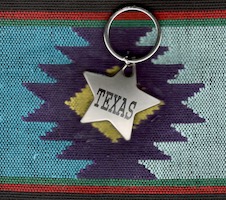


Marfa | Fort Davis | Alpine | Marathon
The first three cities, Marfa, Fort Davis, and Alpine, are in a circle on the map. Marathon is a little further east. It's two hundred miles from El Paso to the first town, Marfa.
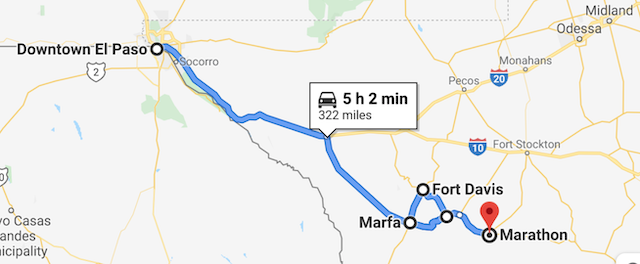
These four towns hover above the entrance to Big Bend National Park and cater to park visitors. It's about eighty miles from either Alpine or Marathon to the Park entrance. This is known as the Tri-County area north of Big Bend National Park, see: nps.gov
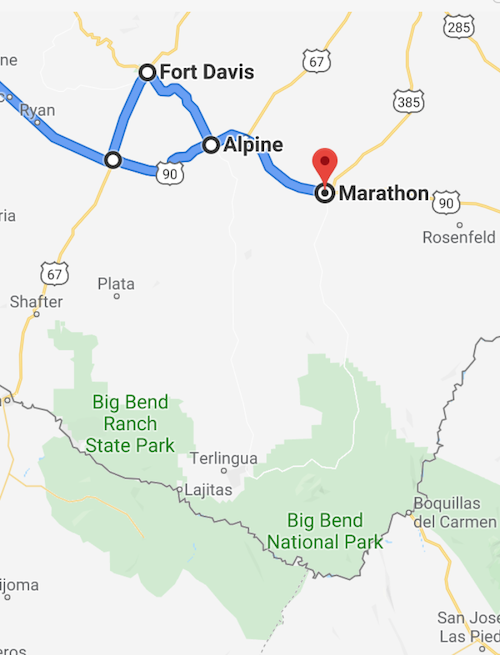
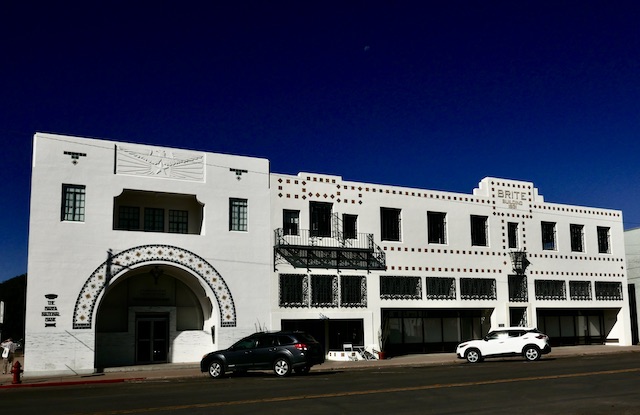
The Brite Building.
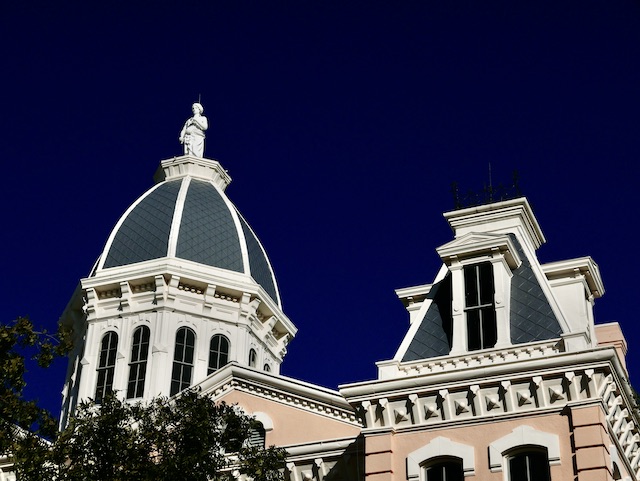
The courthouse dome. A plaque on the building says:
Presidio County Courthouse
A landmark of the Big Bend. Large dome is visible for miles. Constructed of native stone and brick made at Marfa. Stucco added later.
Built in 1886 in this county's third seat of justice. First county seat was Fort Leaton on the Rio Grande; second, Fort Davis.
Recorded Texas Historic Landmark - 1964.
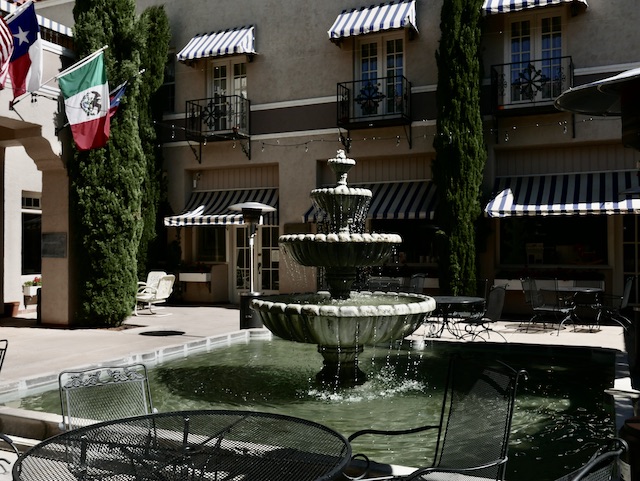
The Hotel Paisano, by architect Henry Trost hotelpaisano.com. Trost also built the Holland Hotel in Alpine, the Gage hotel in Marathon, and hundreds of other historic buildings in and around El Paso and the Southwest.
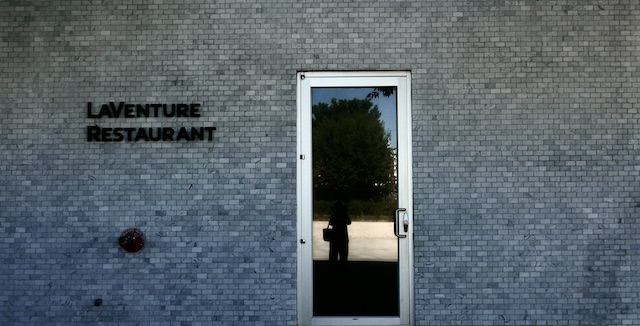
LaVenture Restaurant is in the lobby of the Hotel St. George, a perfect place for lunch while sightseeing in Marfa.
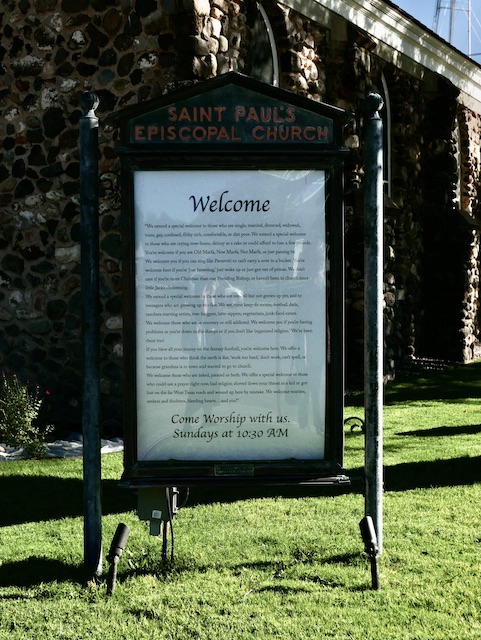
The St. Paul's Episcopal Church in Downtown Marfa had a welcome sign out front that made us want to join!
Welcome
We extend a special welcome to those who are single, married, divorced, widowed, trans, gay, confused, filthy rich, comfortable, or dirt poor. We extend a special welcome to those who are crying new-borns, skinny as a rake or could afford to lose a few pounds. You're welcome if you are Old Marfa, New Marfa, Not Marfa, or just passing by. We welcome you if you can sing like Pavarotti or can't carry a note in a bucket. You're welcome here if you're "just browsing," just woke up or just got out of prison. We don't care if you're more Christian than our Presiding Bishop, or haven't been in a church since little Jack's christening.
We extend a special welcome to those who are over 60 but not grown up yet, and to teenagers who are growing up too fast. We welcome keep-fit moms, football dads, ranchers starving artists, tree-huggers, latte-sippers, vegetarians, junk-food eaters. We welcome those who are in recovery or still addicted. We welcome you if you're having problems or you're down in the dumps or if you don't like "organized religion." We've been there too!
If you blew all your money on the fantasy football, you're welcome here. We offer a welcome to those who think the earth is flat, "work too hard," don't work, can't spell, or because grandma is in town and wanted to go to church.
We welcome those who are inked, pierced or both. We offer a special welcome to those who could use a prayer right now, had religion shoved down your throat as a kid, or got lost on the far West Texas roads and wound up here by mistake. We welcome tourists, seekers and doubters, bleeding hearts . . . and you!
Come Worship with us.
Sundays at 10:30 AM

Artist Donald Judd established the Chinati Foundation - La Fundación Chinati - in 1979. It's a contemporary art museum of permanent installations set on 340 acres, with remains of the Fort D.A. Russell military installation, active 1911-1946.
Judd believed artists needed a place to install their visionary contemporary works, where the art can remain indefinitely. Judd set up his exhibit of one hundred aluminum boxes in renovated and specially modified artillery sheds. His exhibit is called 100 untitled works in mill aluminum, 1982-1986.
All the aluminum boxes are a uniform 41 x 51 x 72 inches, but he breaks the space in each box in a different way. I thought some boxes would make great closets, but most are suited best to hold air. He designed the boxes on paper, had them fabricated, and brought to Marfa. Work took place with funding from the Dia Art Foundation.
Other installations include John Chamberlain and Robert Irwin (below). For more information, go to chinati.org.

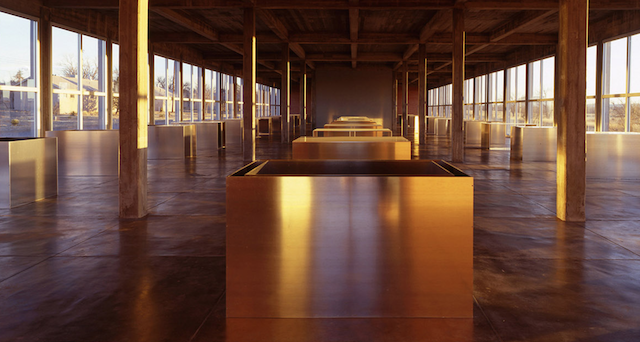
This photo, courtesy of Chinati Foundation, shows the entrance to the Donald Judd 100 untitled works in mill aluminum, 1982-1986 exhibit.
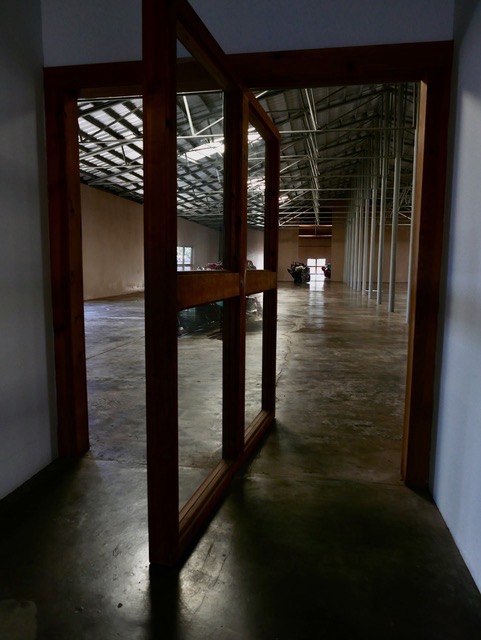
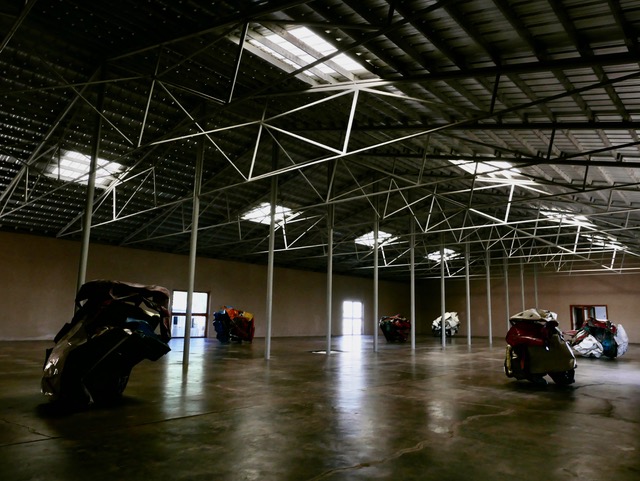
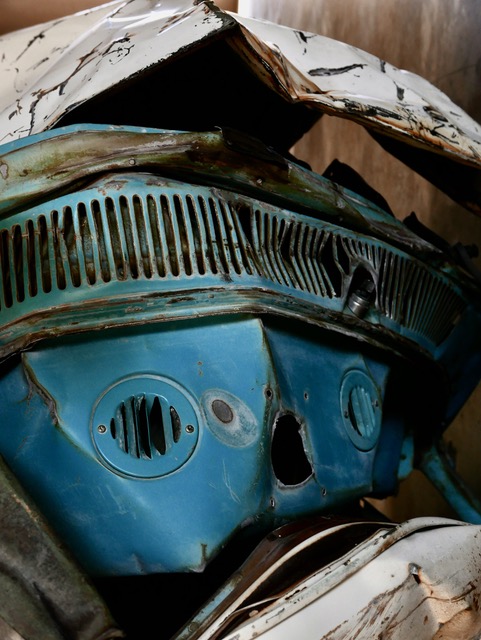
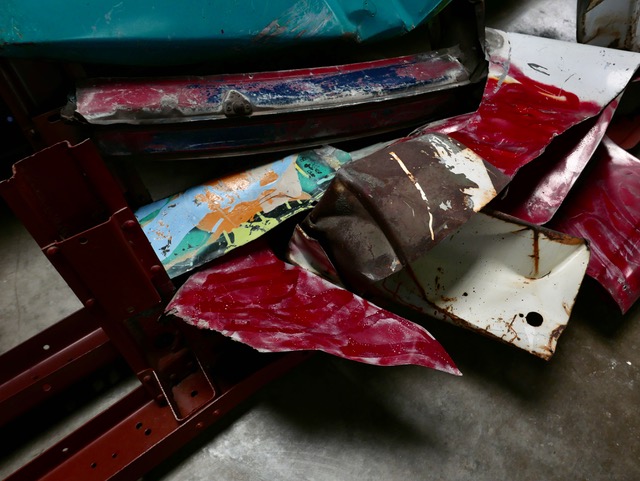
The crushed cars Chamberlain used for this exhibit were all from the fifties when cars were made of metal. The sculptures are chunky and visceral, set in an emotional environment to remind you of what is real.
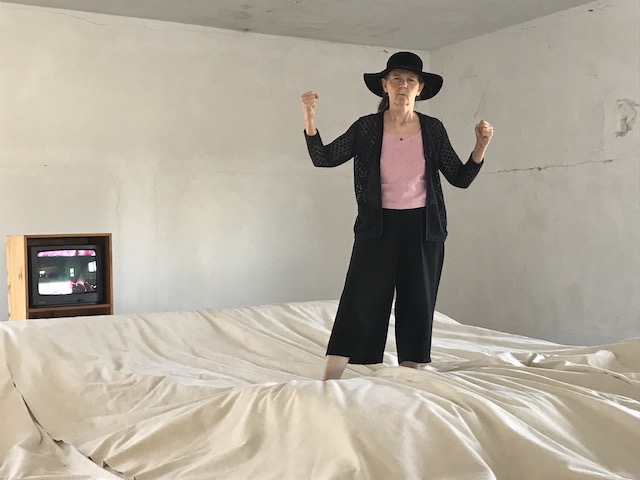
This is me standing on the giant couch John Chamberlain built so people could watch his documentary. The show can be seen playing on monitors on either side of the couch. Photo by Doreen Kerby.

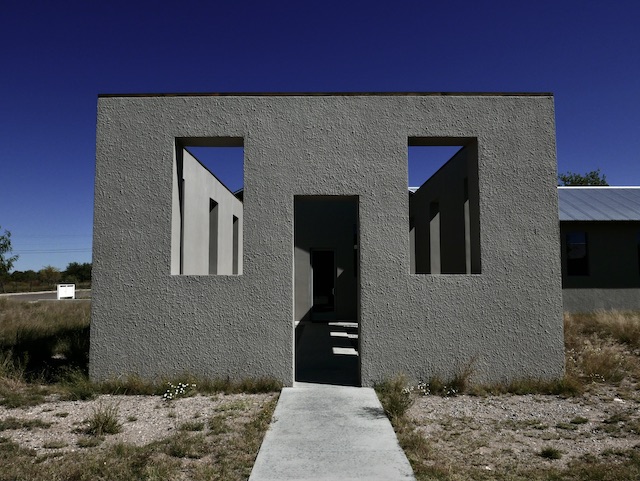
This is the entrance to untitled (dawn to dusk), 2016. Artist Robert Irwin designed it as an art piece in itself. It's a starkly minimalist, empty building, with windows. It was absolute my favorite exhibit at Chinati Foundation. When I walked in, I felt restless and exhausted from too much travel at too high an altitude. However, as I walked through the building, it made me feel lighter and lighter. By the time I exited, I felt energized.
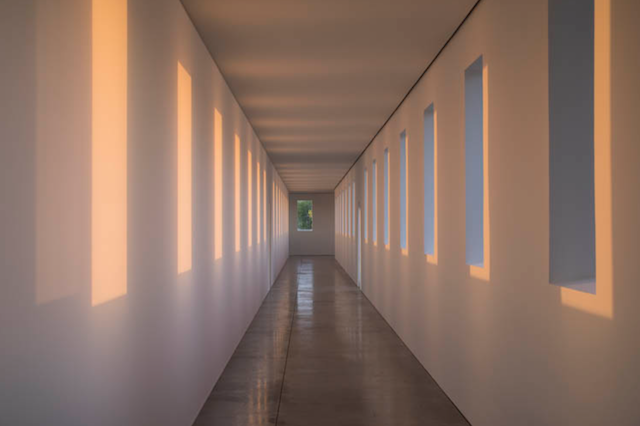
This photo, courtesy of the Chinati Foundation, shows how the light changes toward the end of the exhibit. The patio was beautiful, minimalist desert plantings and a maze of cement walkways.
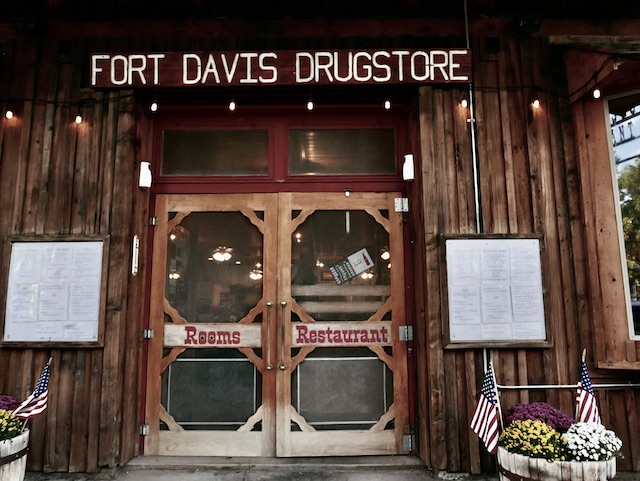
While Marfa is a center for the arts, Fort Davis is a party. The Fort Davis Drug Store is one of several restaurants on the main highway where people go for good food and a good time. Other features of the area: Fort Davis National Historic Site, McDonald Observatory, and Davis Mountains State Park.
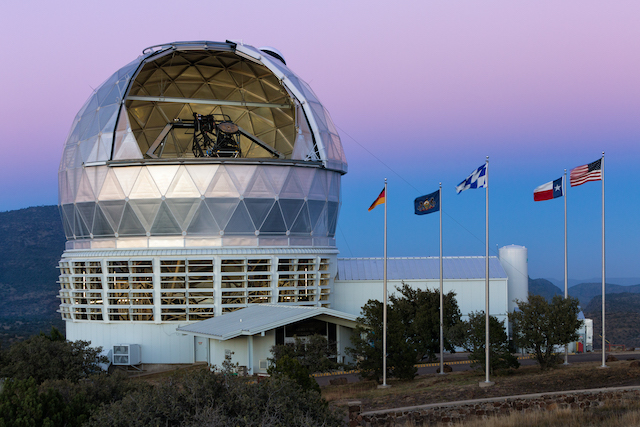
This is the Hobby-Eberly Telescope (HET) at the McDonald Observatory, installed in 1997. It's has a 433 inch mirror, and is one of the world's largest optical telescopes. It was a joint project of The University ä Texas at Austin, Pennsylvania State University, Ludwig-Maximilians-Universität München, and Georg-August-Universität Göttingen, in Germany. Photo courtesy of McDonald Observatory.
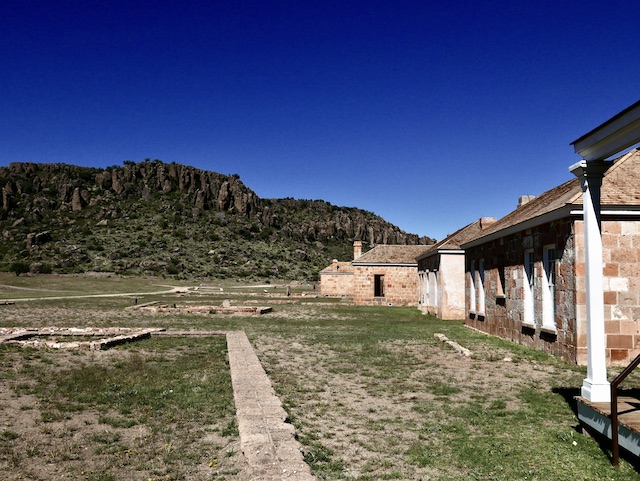
The U.S. Army established Fort Davis in 1854. The original buildings were wood with thatched and canvas roofs. Later they built stone barracks for the enlisted men. The fort had more than fifty structures for an average population of 191 officers and men. The Federal troops abandoned Fort Davis in April 1861, when Confederate soldiers occupied the Fort and stayed until August 1862. The building shown below is the post hospital.
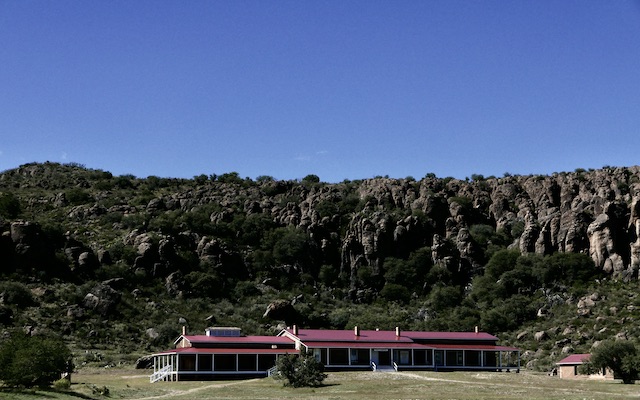

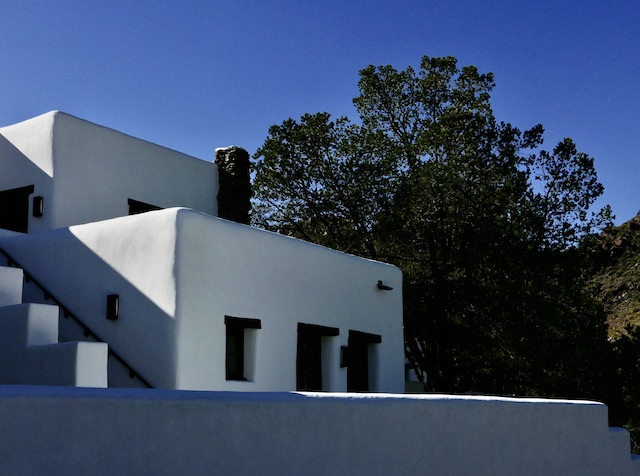
Within Davis Mountains State Park is the historic Indian Lodge Hotel and Restaurant. The government built the lodge during the Great Depression under the New Deal WPA , and it's still thriving today. To secure reservations and find links to everything in the area, go to: texas.gov.
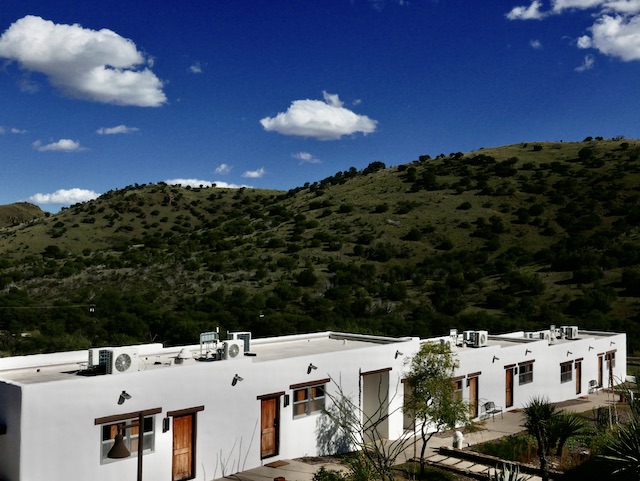
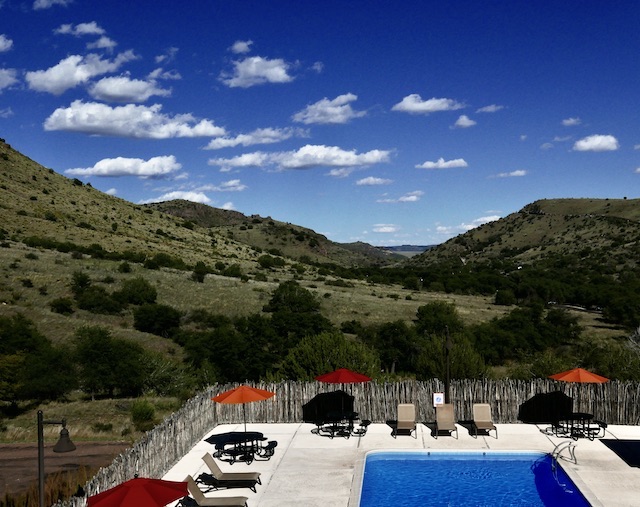
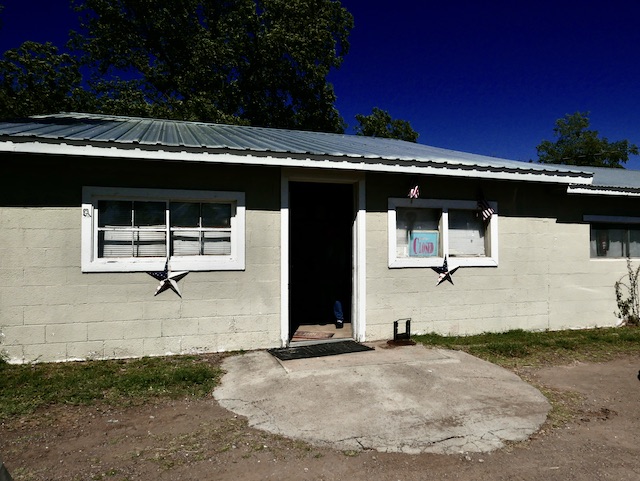
Our group had lunch at this humble restaurant, Poco Mexico, in Fort Davis. It's famous for the best Mexican food in the West.

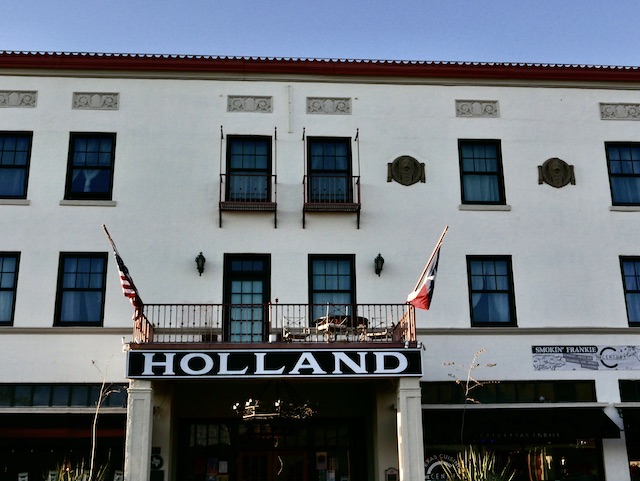
This is the Holland Hotel, another historic building by architect Henry Trost - thehollandhoteltexas.com. The photo below shows the main lobby.
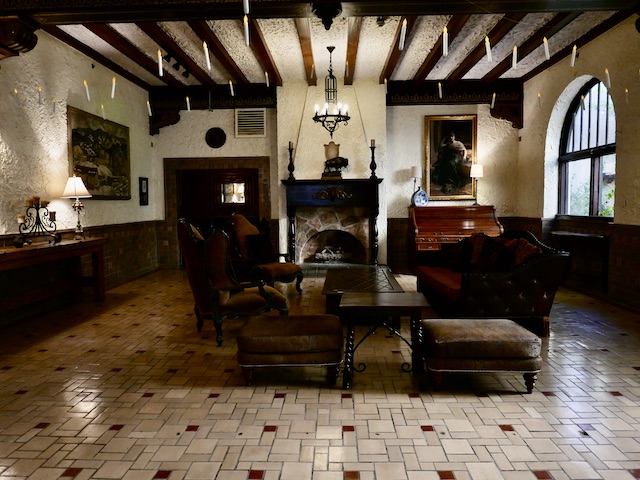
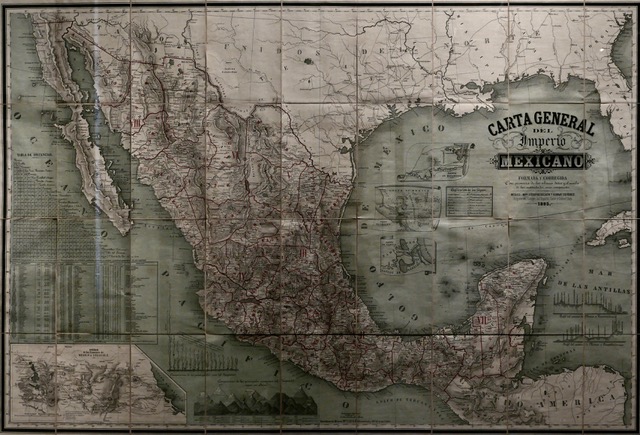
Sul Ross State University, Alpine, is the home of the Big Bend History Museum and Map Room. Seen above is one of the historic maps; below is a mural by Sul Ross, which was covered for many years, then discovered by Curator and Professor Matt Walter.
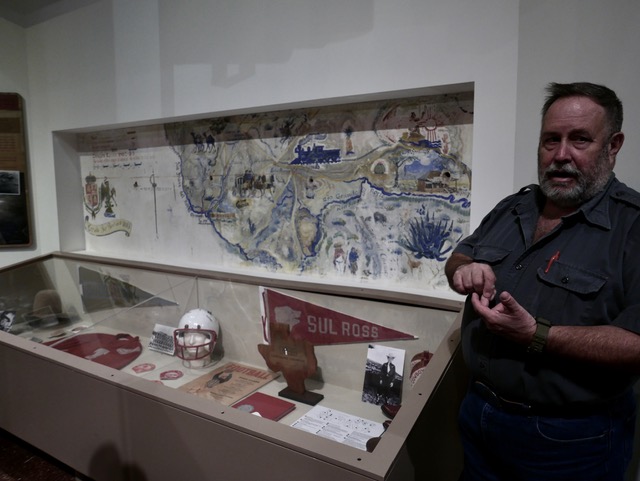
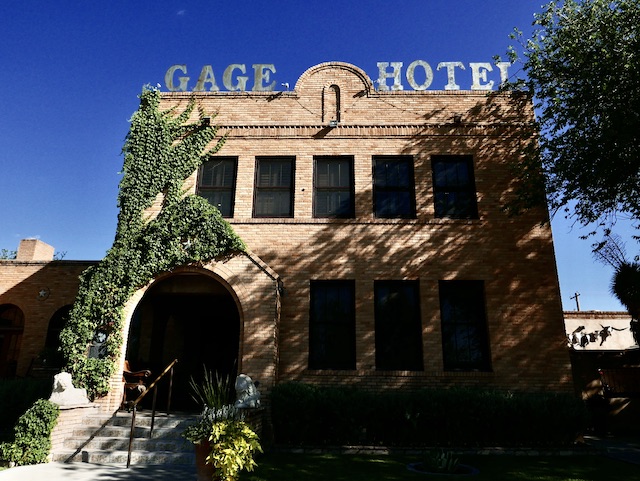
The Gage Hotel, by architect Henry Trost, anchors Marathon, a town with a population of 450 neighbors and friends.
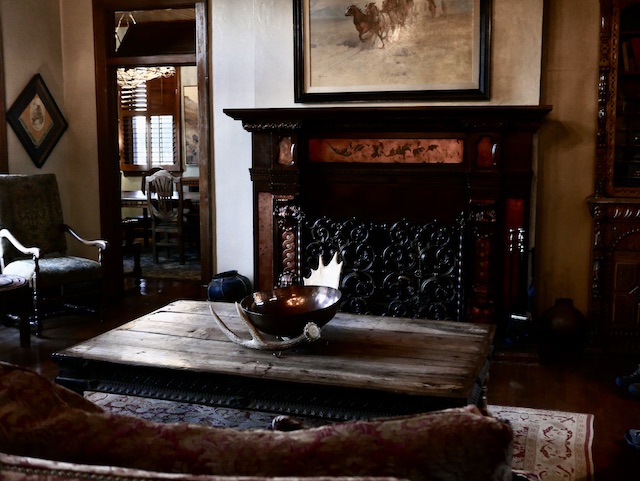
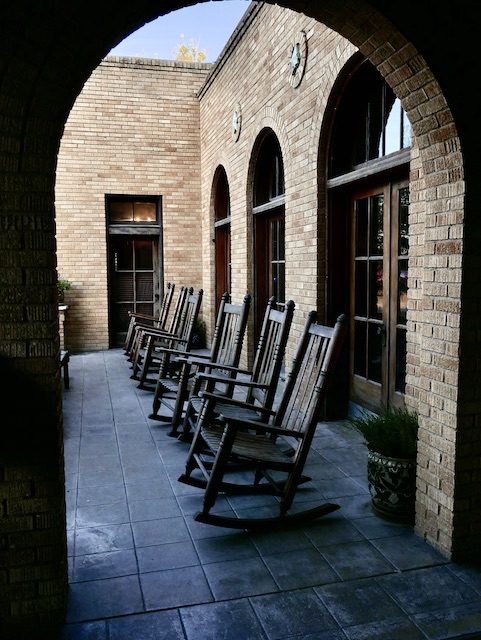
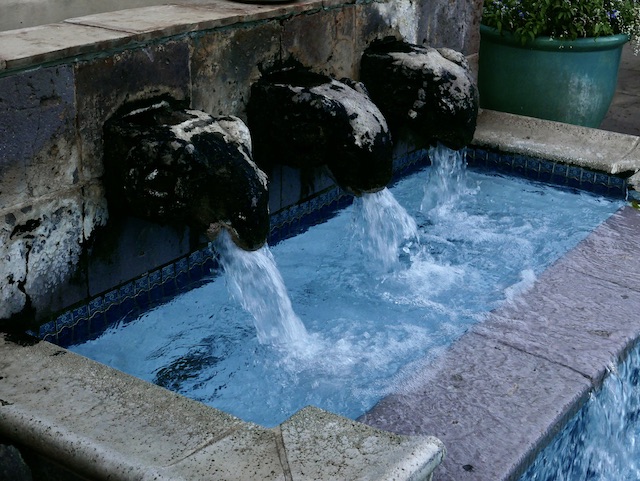
Gage Gardens is a twenty-seven acre park of native plants, flowers, and trees. It attracts birds and butterflies, and offers an off-leash dog park where dogs can run around and play, and take a dip in the pond. Gage Gardens holds public events, and hosts private events like weddings and parties. For more information go to: gagehotel.com.
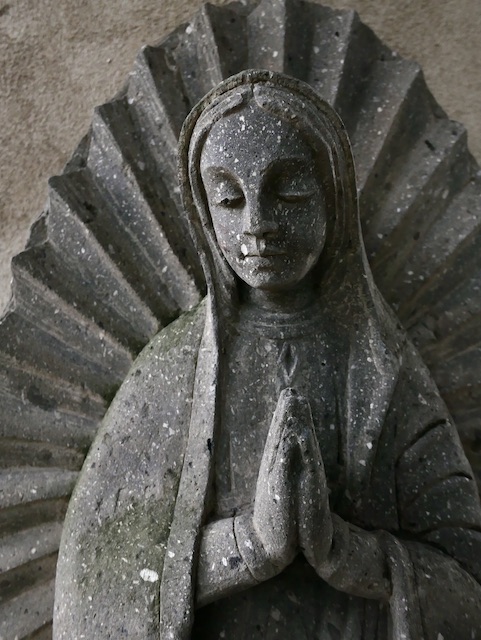
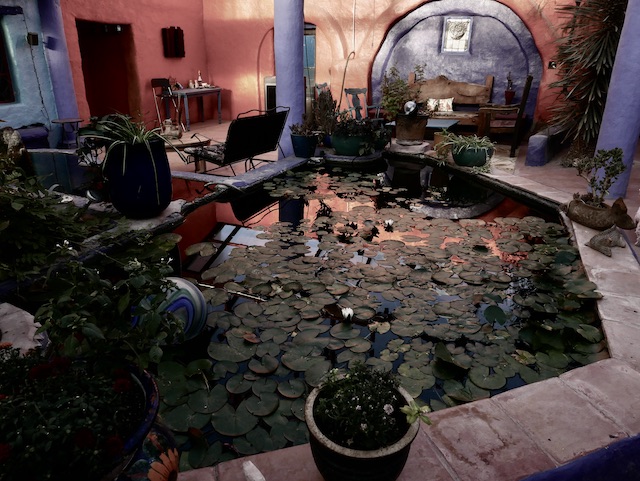
From the Gage Hotel it's a short walk to Eve's Garden Bed and Breakfast. The owners built the B&B of papercrete, an eco-friendly building material made of recycled paper pulp, Portland cement, and clay. Papercrete was invented in 1928, and is still in use today.
We had a breakfast of organic vegan waffles, sweetened with hippy sugar, and topped with organic homemade whipped cream and fresh berries. Just to top things off, there's a lap pool just off the kitchen.
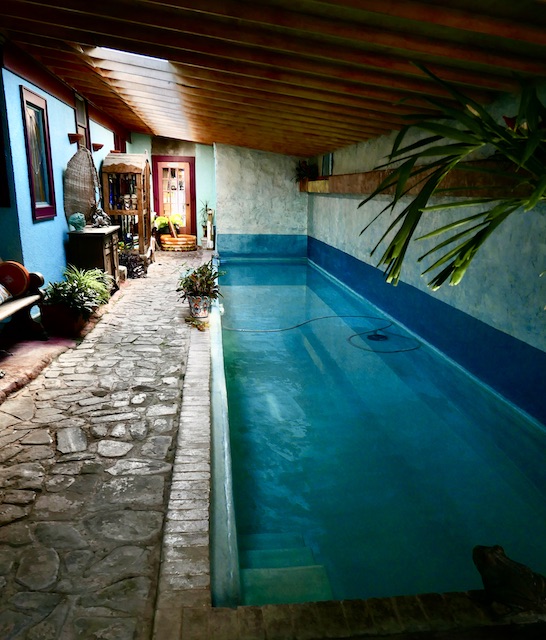
Go here for photos of Downtown El Paso
